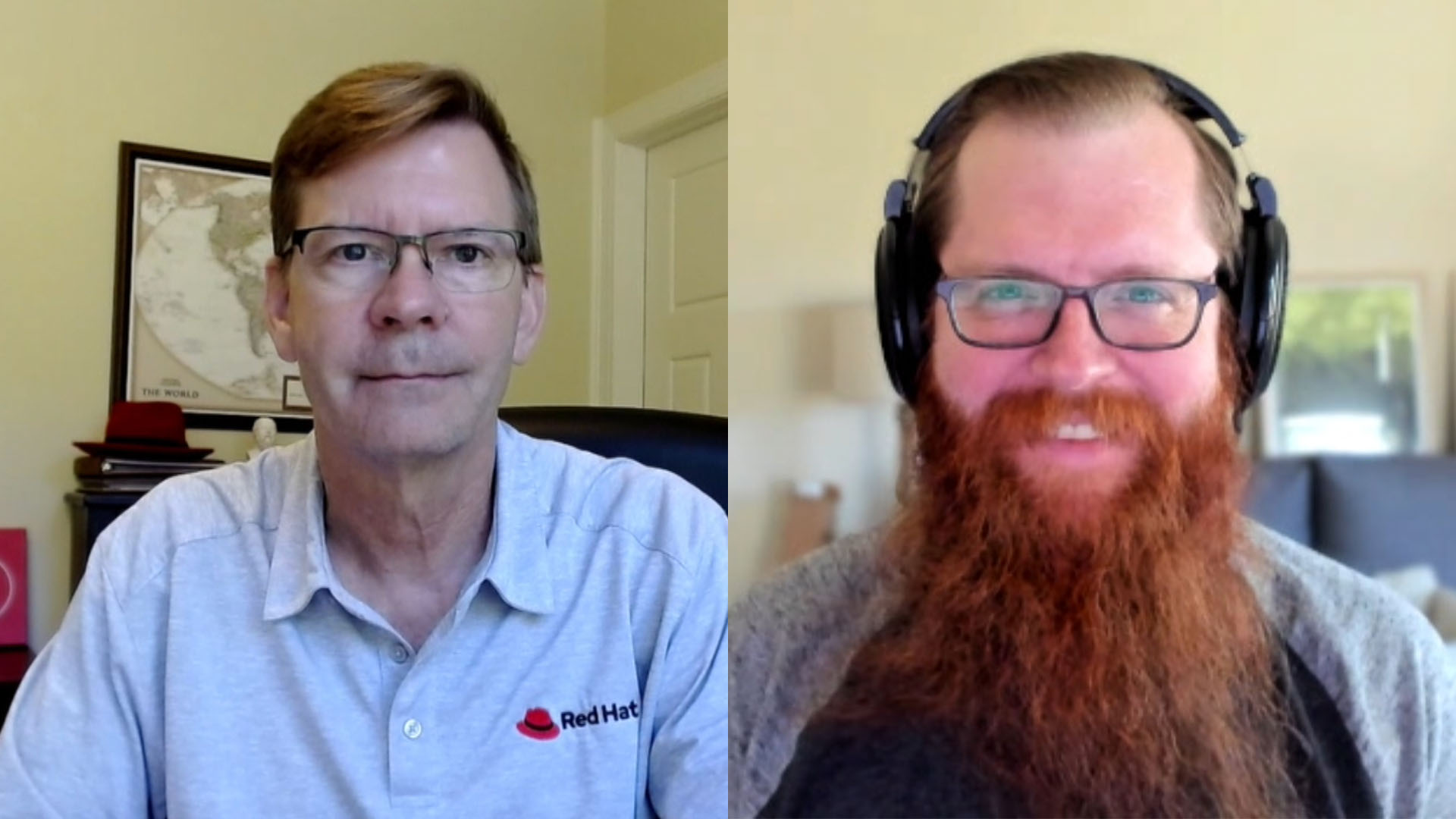 INFRA
INFRA
 INFRA
INFRA
 INFRA
INFRA
Automation is accelerating across IT, according to experts. The big question, though, is how one performs that automation more easily, across an organization’s workloads, networks, security and more. All the other ancillary domains or situations need it, in fact.
Indeed, it’s not simply an acceleration of automation that’s occurring, but it’s “an acceleration of: how do you apply [the] automation?” revealed Dave Lindquist (pictured left), vice president of hybrid cloud management and IBM fellow at Red Hat Inc.
Lindquist, along with Matt Jones (pictured right), senior principal software engineer at Red Hat, spoke with John Furrier, host of theCUBE, SiliconANGLE Media’s livestreaming studio, during AnsibleFest 2021. They discussed deployment issues and how automation needs to scale. (* Disclosure below.)
Red Hat says it’s concentrating on getting Ansible, its open-source community automation project, to fulfill enterprise needs across the entire IT stack. That means that disparate teams, from systems administrators to developers to managers, should be able to be in on the automation language and get to use it. It’s the only sensible way to get it to scale the technology, they think.
“Where we want to grow into is the native automation that makes up the cloud, that makes up the services and infrastructure,” Jones said. “Not [something] just developers’ interface with, but administrators, DevOps, SRE, common users, normal people who are just trying to get things done.” Jones is the chief architect of the automation platform.
Red hat is seeing patterns emerge, including an acceleration at applied automation across full life cycles and domains, according to Lindquist. He believes the best way to deal with the shift from what was simple container-oriented automation is to introduce automation into the processes earlier.
“We’re starting to see where customers are really starting to push the envelope on their use of automation across those life cycles,” he said.
Setting up clusters, deploying applications, fixing security events and performing compliance activities are all candidates for acceleration.
The enterprise framework, which the open-source solutions provider calls Red Hat Ansible Automation Platform, must natively allow for the building of IT automation at scale, according to Lindquist and Jones. Part of the way they intend that to happen is by incorporating developer tools within the platform that takes it significantly beyond the traditional command-line interface. Red Hat has a new release of Ansible coming out in which this will be incorporated.
“We’ve created a whole developer focus space within the automation platform; a suite of tools that integrate into their development environments, their own automation workflows,” Jones said.
That should make it easier to collaborate and share in automation throughout the enterprise, he added.
In addition to the tools, another facet that indicates the all-team-oriented, all-encompassing direction Ansible says it’s headed is awareness that users have been “having to fumble around the documentation,” Jones pointed out. That is being tweaked.
“We want to make this smooth,” he said. “We want the pipeline of automation to go from the developer and their team into the content publisher publishing and management of automation hub, using collections and execution environments.”
And that’s not simple, they explain. Pushing automation to the extreme in newer environments, such as is seen in AIOps and edge, for example, conceivably introduces “hundreds of thousands, if not millions of endpoints.” Controlling that environment in just one angle, like security, for example, gets increasingly complicated.
“None of it is optional anymore,” Jones said.
Watch the complete video interview below, and be sure to check out more of SiliconANGLE’s and theCUBE’s coverage of during AnsibleFest 2021. (* Disclosure: TheCUBE is a paid media partner for AnsibleFest. Neither Red Hat Inc., the sponsor for theCUBE’s event coverage, nor other sponsors have editorial control over content on theCUBE or SiliconANGLE.)
Support our mission to keep content open and free by engaging with theCUBE community. Join theCUBE’s Alumni Trust Network, where technology leaders connect, share intelligence and create opportunities.
Founded by tech visionaries John Furrier and Dave Vellante, SiliconANGLE Media has built a dynamic ecosystem of industry-leading digital media brands that reach 15+ million elite tech professionals. Our new proprietary theCUBE AI Video Cloud is breaking ground in audience interaction, leveraging theCUBEai.com neural network to help technology companies make data-driven decisions and stay at the forefront of industry conversations.